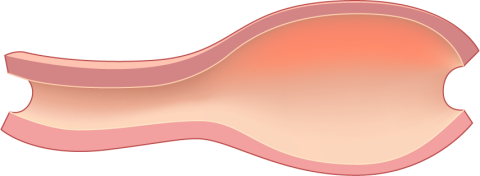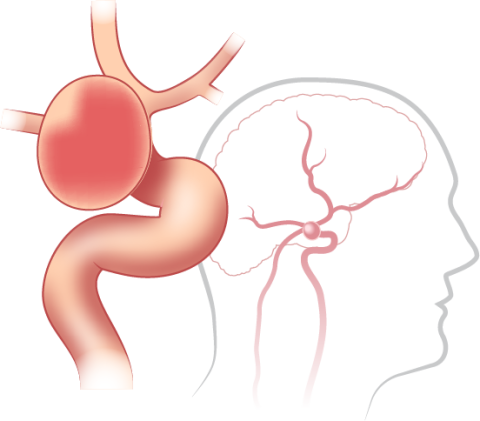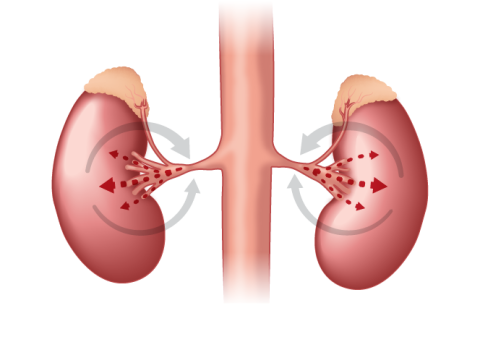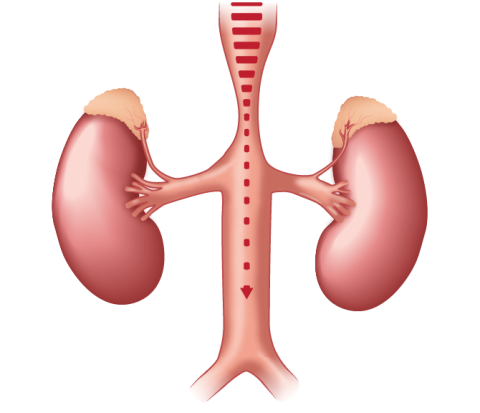Arterial Dysplasia Conditions
Understanding these vascular conditions is crucial for early detection, appropriate medical management, and intervention to prevent potentially life-threatening complications.

Fibromuscular dysplasia (FMD): is a vascular disorder that primarily affects the walls of medium-sized arteries, most commonly those leading to the kidneys and brain, although any artery in the body may be affected. In FMD, abnormal cell growth and scar tissue in the artery walls cause the arteries to become narrowed, twisted, or even dissect or form aneurysms. This can lead to high blood pressure, reduced blood flow to affected organs, and an increased risk of dissections or aneurysms. The exact cause of FMD is not fully understood, but genetic factors play a role, as well as potential hormonal influences.

Spontaneous arterial dissections (SCAD, CeAD): Can occur in any artery of the body, such as the coronary (SCAD) cervical (carotid and vertebral, CeAD), mesenteric, renal, iliac, or other arteries. Arterial dissection is a condition where there may be a tear in the inner lining of the arteries leading to blood accumulating in the wall of the artery, or spontaneous bleeding into the wall of the artery, leading to sudden narrowing of the artery and decreased blood flow. Manifestations include stroke, heart attack, or other organ dysfunction or injury related to lack of adequate blood flow. While the exact causes are not always clear, factors such as high blood pressure, underlying connective tissue disorders, and genetic predisposition may contribute to this condition.

Arterial aneurysms: Refer to weakened and dilated areas in the walls of arteries. These areas are prone to bulging and can rupture if left untreated, leading to life-threatening bleeding. Arterial aneurysms can occur in various arteries throughout the body, affecting the brain, neck vessels, heart arteries, abdominal arteries, and others. Risk factors include high blood pressure, and certain genetic conditions that affect the connective tissues.

Brain aneurysms: Also known as intracranial aneurysms, are weakened and dilated areas in blood vessels within the brain. These arterial areas can balloon out and potentially rupture, causing bleeding, leading to serious conditions such as subarachnoid hemorrhage. Brain aneurysms are often asymptomatic until they rupture, and risk factors include a family history of aneurysms, smoking, high blood pressure, and certain genetic conditions that affect the blood vessels.

Renovascular hypertension: When the kidney receives decreased blood flow, the kidney responses that are designed to regulate blood pressure are activated to raise blood pressure. Left untreated, high blood pressure (hypertension) may be severe and damage many organs throughout the body. Medical treatment of hypertension due to limited blood flow through a narrowed renal artery may be treated with medications alone, and in some cases surgery or angioplasty to restore blood flow in renovascular hypertension.

Mid-aortic syndrome: The abdominal aorta can be narrowed, leading to loss of blood flow to vital organs, such as the kidneys, and the lower half of the body. It can be a cause of renovascular hypertension, due to the loss of adequate blood supply to the kidney. Narrowings of the aorta are also referred to as “coarctations.”
Patient Resources
FMD (Fibromuscular Dysplasia)
SCAD (Spontaneous Coronary Artery Dissection)
- Vancouver SCAD Conference and Key Patient Resources
- SCAD Alliance
- Beat SCAD
- SCAD Warrior App (created to help patients recover from SCAD)
- Cardiology patient page. Spontaneous coronary artery dissection
Cardio-Obstetrics
Pediatric Renovascular Hypertension
- C.S. Mott Renovascular Hypertension Center (Pediatric)
- pRVH PCOR Collaborative (providing support and resources for patients with pediatric renovascular hypertension and their families)
